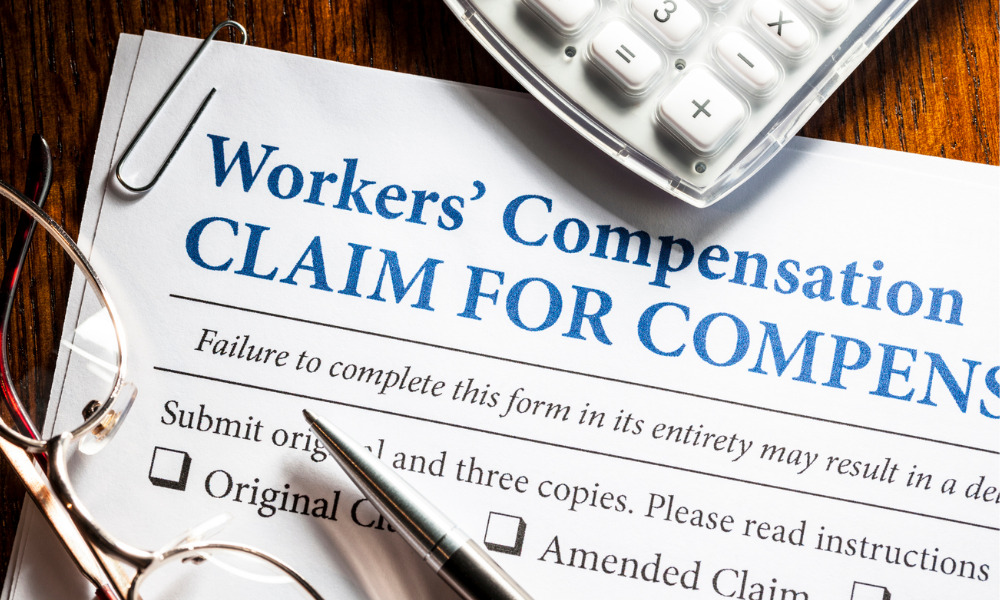Female claimants more likely than non-claimants to admit intentional self-harm, says report

A previous report noted that precariously employed workers suffer perceived unfair treatment during the injury claims process. Now, another study claims that some workers going through the claims process might be inflicting harm upon themselves.
“While workers’ compensation schemes aim to assist and support injured workers, there is some evidence that the process of pursuing a compensation claim may be extremely stressful for workers,” said Tania L. King, et al. in their report titled Associations between workers’ compensation and self-harm: A retrospective case-series study of hospital admissions data published in The Lancet.
Read more: How to help precariously employed workers handle claims process
Overall, the incidence of hospital admissions with the combined “self-harm and probable self-harm” was substantially elevated in both male and female workers’ compensation claimants relative to non-claimants.
For female claimants, the incidence rate for hospital admissions was 3.4 times higher than non-claimants, with a risk difference of 114.8 per 100,000 person-years. For male claimants, the incidence rate was 5.8 times higher than non-claimants with a risk difference of 167.7 per 100,000 person-years.
Male claimants across all age groups had increased rates of hospital admissions for “self-harm and probable self-harm”. This was especially pronounced among those aged 20–29 years (7.3 times more likely) and 30–39 years (7 times more likely), with an extra 269 and 251 admissions per 100,000 person-years respectively for workers’ compensation claimants compared to non-claimants in the same age groups.
Female claimants across all age groups from 30 to 39-years (3.9 times, or 125.6 per 100,000 person-years) through to 60–69 years (4.5 times, or 57.1 per 100,000 person-years) had increased incidence rates for hospital admissions for ‘self-harm and probable self-harm’. The total incidence rate for admissions for intentional self-harm was 2.4 times higher among female claimants than non-claimants, according to the report.
This means that there were 47.7 (per 100,000 person-years) more admissions for self-harm among workers’ compensation claimants than would be seen in female non-claimants with the same age profile. The study sample comprised of 42,567 patients who had 50,205 admissions in Victoria, Australia, between the financial years 2011/2012 and 2017/2018.
Female claimants aged 50 to 59 years old are also 6.5 times more likely than non-claimants to admit intentional self-harm. The adjusted risk difference indicated that there were 122 extra admissions per 100,000 person-years for intentional self-harm among females receiving workers’ compensation compared to female non-claimants aged 50 to 59 years. For male claimants, however, the incident rate was not observably different to non-claimants (rate ratio 1.0).
“On the basis of our results, it is plausible that the process of engaging with the workers’ compensation is experienced as highly stressful for some claimants,” said King, et al.
Read more: New program looks to help brain injury survivors return to workforce
“Engaging with the compensation scheme can require ongoing and repeated checks and assessments. These checks and assessments can be stressful and it is therefore possible that for a subset of these claimants, this is associated with self-harming and suicidal behaviours and by extension, the higher rates of hospital admissions for self-harming injuries observed in this analysis.”
Also, there is a strong positive association between worker experiences of the insurance claims process and self-reported return to work status, according to Injured worker experiences of insurance claim processes and return to work: a national, cross-sectional study, published in the BMC Public Health on July 10, 2019.
“There is a strong positive association between worker experiences of the insurance claims process and self-reported return to work status,” according to Alex Collie, et. al, authors of the report. “Revision and reform of workers’ compensation claims management practices to enhance worker experience and the fairness of procedures may contribute to improved return to work outcomes.”





